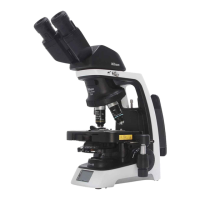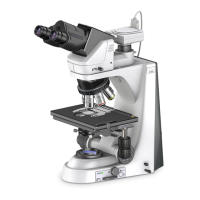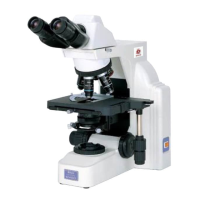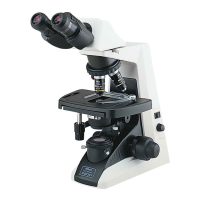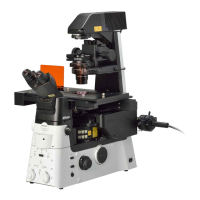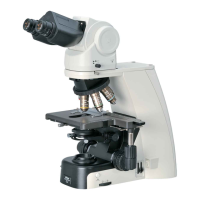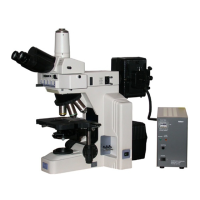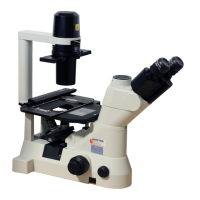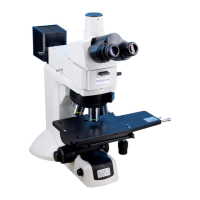Chapter 3 Individual Operations
120
Individual
Operations
16.2
Selecting Filters
A filter cube consists of three types of optical components: an
excitation filter (EX filter), a barrier filter (BA filter), and a dichroic
mirror (DM). Select the filter cube with the desired combination
of optical components to suit the characteristics of the sample
and the fluorophore by referencing the properties of each filter,
and attach the filter cube to the epi-fluorescence cube turret.
You can select a combination of an excitation filter and a barrier
filter even if you are using the same excitation method.
Excitation filters, barrier filters, and dichroic mirrors can be
purchased separately.
Since excitation filters are exposed to strong light during
operations, they will deteriorate over time. Replace the filter at
intervals determined by usage.
UV-2A
EX 330-380
DM 400
BA 420
Filter Cube
Excitation filter (EX filter)
Excitation filters allow selective transmission of light (excitation
light) in the wavelength range required for fluorescent light
emissions from the specimen, blocking light of all other
wavelengths. The range of wavelengths allowed to pass through
a filter is referred to as the bandwidth.
The bandwidth range of an excitation filter determines the
brightness of the fluorescent image, the generation of auto
fluorescence (fluorescence resulting from substances other than
the fluorophores), and degree of fading. The broader the
bandwidth, the greater the amount of excitation light irradiated
onto the specimen, thereby increasing the brightness. However,
this also increases the amount of auto fluorescence and causes
faster color fading. Narrow bandwidth reduces the amount of
excitation light striking the specimen and causes the image to
appear darker, but reduces auto fluorescence and fading. For
specimens with pronounced auto fluorescence, use excitation
filters with a narrow bandwidth. (Note that this will make the
fluorescent image darker.)
Since excitation filters are exposed to strong light during
operations, they will deteriorate over time. Replace the filter at
intervals determined by usage.
EX Filter Bandwidth
EX Filter Bandwidth and Fluorescent Image
Narrow EX Filter Bandwidth Wide
Brightness of
fluorescent image
Dark Bright
Generation of auto
fluorescence
Low High
Degree of color fading Low High
Excitation filte
Barrier filter
Dichroic mirror (inside the cube)
EX filter
Bandwidth
Spectral
transmittance
Wavelength
0
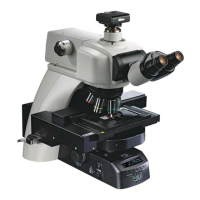
